Constructing UTVs
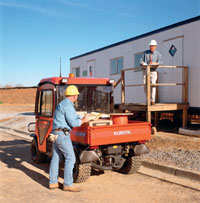 Crunching over the construction demolition left by a hydraulic breaker, maneuvering around mountains of spoils left from a digging excavator, stopping to pick up a mud-covered crew for lunch, a work-focused utility vehicle can cross busy jobsites with speed and safety. The dust kicks up and lingers in the air, swirling for a moment. The spinning tires grip and the utility vehicle bursts forward again. There’s more work to be done.
Crunching over the construction demolition left by a hydraulic breaker, maneuvering around mountains of spoils left from a digging excavator, stopping to pick up a mud-covered crew for lunch, a work-focused utility vehicle can cross busy jobsites with speed and safety. The dust kicks up and lingers in the air, swirling for a moment. The spinning tires grip and the utility vehicle bursts forward again. There’s more work to be done.
While the classic pickup has been a long-standing jobsite essential, a utility vehicle (or UTV) is now becoming a popular all-terrain transport alternative. Engineered with power, mobility and a compact design, a UTV can weave in and out of jobsite nooks and over the treacherous terrain not fit for your Ford or International work truck. Cross bred between a pickup’s utility and an all-terrain vehicle’s (ATV) rugged, go-anywhere attitude, today’s UTV offers enough options and features to make both a great jobsite man-mover and a bonafide workhorse.
“UTVs off-road capabilities lead to jobsite tasks,” says Van Holmes, public relations manager for Yamaha’s ATV and side-by-side department. “You have the terrainability of being mobile in wet weather and mud or in rocky areas. Its size is also a benefit — able to get into tighter areas than a pickup. You have the two-wheel drive for running around the jobsite and the ability to switch into four-wheel limited slip or four-wheel differential lock for rugged situations.”
Crew members aren’t the only cargo you’ll see a UTV hauling around a jobsite. From sand, mulch and gravel to concrete bags, concrete footers and work tools, UTVs from manufacturers like Polaris, Yamaha, Kubota, Cub Cadet, Bobcat, John Deere, Kawasaki, Arctic Cat and E-Z-GO offer between 400 and 1,500 lbs of hauling capacity, and UTV newcomer ASV’s tracked-out, tank-like Scout sports a hefty 4,000 lbs for the toughest of the tough.
“The Scout ST-50 is a rubber track UTV with a suspended undercarriage that gives it the traction and flotation to go just about anywhere,” says Brad Lemke, director of new product development for ASV Inc., a compact track loader manufacturer since 1983. “As a result, the machine’s 4,562-lb operating weight is distributed down to only 2.38 lbs per sq in. — about half the ground pressure of a person on foot.”
Need to move a trailer, tow-behind generator or light tower? UTVs have you covered with towing capacities between 600 to 2,000 lbs.
“Utility vehicles can tow and haul payloads similar to a pickup,” says Aaron Hanlon, product marketing manager for Cub Cadet. “The easy access beds make it easier for employees to take materials and tools in and out of the bed. The Cub Cadet
Volunteer, for example, even has a bed specifically designed for pallets. And tow motors can be used to lift pallets of materials directly into the bed for transportation.”
That’s right. No more breaking your back pulling tools and materials into a high pickup bed and hefting it out. No more hauling bags of mulch or wheelbarrows full of gravel to those hard-to-reach projects. But wait. Before you capitalize on your visions of free-wheelin’ across the jobsite, you have to know the UTV basics.
Mapping the Market
Bidding a job takes information and instinct. Sure, you have to know the job specs, but it takes time to develop the sixth sense for making the right decisions at the right time. And jumping into the UTV market is no different, except that your UTV-buying instinct is the understanding of your daily work — so let that guide you when wading through the multitude of machine options.

“The best choice of drivetrain depends on the needs and terrain of the construction site,” says Dennis Carter, regional manager for E-Z-GO, a company founded in a one-room machine shop in Grovetown, Ga., in 1954 and is now a global manufacturer of golf carts and utility vehicles. “For more than 90 percent of the terrain, a two-wheel drive model will be sufficient. In the extreme conditions a 4×4 would be considered.”
But contractors know how messy the jobsite can get. After a heavy rain, quicksand-like mud claims machines left and right. By throwing a UTV into four-wheel drive or four-wheel drive differential lock, it has the pulling power to plow through the stickiest driving situations. John Deere, Bobcat and Polaris offer computer-controlled, four-wheel drive systems that sense sensitive and tough terrain and adjust the drive wheels accordingly. Bobcat, Club Car and Yamaha offer systems that can select one-, two-, three- or four-wheel drive, depending on the situation. Pricing for 4x2s is usually in the $6,000 to $8,000 realm today, 4×4 UTVs tend to range from $8,500 to $10,000, while 6x4s and 6x6s are falling between $8,300 and $11,000 these days.
“By giving the operator or driver the ability to choose the best drive setting — two-wheel for cruising one day and if it rains and the jobsite is muddy and rutted out, he can push a button and put it into four-wheel limited slip or differential lock,” says Holmes. “Just keep in mind that these machines aren’t recommended for operating on asphalt or concrete. They are designed to be off-road machines and haven’t been specifically designed for on-road applications. Some cities have made them street legal, but as the manufacturer, we recommend off-road use only.”
All UTVs are not recommended for public road use, but that doesn’t necessarily mean they are designed only for trails and soft surfaces. Companies like Cub Cadet, John Deere and Kubota have vehicles with structures and tires that are designed specifically for hard surfaces such as asphalt and concrete — aimed at the commercial user, schools and governments, and for large property land owners who have parking lots and private roads on their properties. Trail tires and sport suspensions will wear out very quickly and will not meet these customer needs.
Many government regulations and construction regulations require utility vehicles to travel at 25 mph or slower. So exorcise your speed demon on the 50-mph Polaris Ranger by hitting the trails and then slow it down for the worksite. You can actually make sure your crew members don’t take your tricked-out new set of wheels for a joy ride; some speed modification technologies — like the John Deere speed limiter on its XUV Series UTVs — can limit the vehicle’s speed without a loss of power. John Deere’s system limits the maximum speed to 20 mph, which is useful when you have more than one operator.
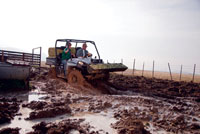
Electronic fuel injection (EFI) is also a growing trend in UTV motors. Originally offered by Polaris, it is now also offered by John Deere, Kubota, Cub Cadet and Yamaha machines. The EFI benefit? It’s being able to start the machine on a cold fall morning when there’s work to be done and winter is right around the corner. The last thing you want to have to do is battle to get the machine started when your fingers are frozen and work weighs heavy on your mind. EFI also has the added benefit of more dependable engine response, better operation in extremely high or low ambient temperatures, reduced maintenance intervals and increased fuel efficiency.
The Underestimated Tool Vehicle
A contractor is never alone. If not accompanied by his trusty crew, he often has his second most-dependable friend in tow — his handy tools. While staple tools such as hammers, screwdrivers and the like are holstered in a tool belt or box, why shouldn’t a tool man be able to cart heavier favorites like a portable generator, concrete saw, pneumatic hammer or an air compressor? The cargo bed of a UTV provides that tool mobility.
Of course, the cargo capacity upward of 1,500 lbs is the major factor, but there are other bed options that help lighten the load. A gas-assisted or hydraulic lift is one of the more popular bed options. When you’re not heading to your next task in your UTV, you’re on your feet, moving materials and working hard. You shouldn’t bear the brunt of back pain from loading and unloading materials. With the pull of a lever, the bed of the UTV will tilt backwards like a dump truck, allowing spoils to spill out or help you pull heavy concrete bags off the machine.
“With more gear or cargo in the bed, the gas-assisted lift really comes into play, lifting those larger loads if you are carting around concrete blocks, bags of concrete or gravel,” says Holmes. “Even if the load is heavier, the gas-assisted feature makes it much easier to manually help the bed along.”
 |
|
|
Of course, carrying a load in the cargo bed isn’t the only option for moving materials. Some manufacturers, like Bobcat’s RapidLink system and Polaris’ BOSS lift and carry system, offer a front attachment system that utilizes a bucket, broom and other attachments for jobsite productivity. These systems typically lift the 500-lb capacity load 2 to 3 ft high. If you need to backfill a small trench and your skid steer is working across the jobsite, just drive into the pile with the bucket attachment and deposit it where you want it, just like a mini loader. For larger tasks, there’s the Bobcat Toolcat utility work machine, which offers a front-mounted arm capable of lifting 1,500 lbs 7 ft high or hauling 2,000 lbs of materials at travel height. The Toolcat also boasts an arsenal of more than 40 attachments — from brooms to stump grinders — that pin to the same Bob-Tach mounting system as other Bobcat machines.
As far as the front of the machine is concerned, the most popular front tools are winches (which often work in conjunction with other attachments). The two main considerations for winches include vehicle weight and line pull. A vehicle’s Gross Vehicle Weight (GVW) must be calculated. Take the vehicle’s weight and add the weight of additional equipment and supplies it carries on a regular basis (that’s the GVW). The winch’s rated line pull must be high enough to pull the UTV’s GVW.
A normal rule of thumb is to use a winch with a line pull of at least 12 percent more than the vehicles GVW. UTV winches are available with line pulls up to 5,000 lbs, with the most popular weight being 4,000 lbs. The most widely used type of winch for UTVs is an electric winch, which works off of the vehicle’s battery or a secondary installed battery. Winches can also be used to hold and operate front attachments like a snow blower, steel blade or broom. Simply match your weekly jobs and budget to the needed attachments.
A UTV is more than just a mode of transportation for tools and tool men alike; it’s also a source of power. Take Kubota’s RTV900 UTV, which turns its cargo bed into a mobile power plant.
“The RTV900 worksite utility model features an exclusive remote hydraulic circuit, with its own transmission oil cooler, reservoir, pump and other components, to allow the use of a variety of powerful hydraulic hand tools such as diamond concrete saws, impact drivers, post drivers and pullers, chainsaws, breakers, tampers and pole pruners,” says Dan Muramoto, product manager of utility vehicles for Kubota Tractor Corp. “These are exclusive, commercial-grade hydraulic tools that are designed specifically for professionals.”
Still, the ASV Scout is the heavy hitter in the UTV market. In addition to a 4,000-lb cargo capacity, it offers a unique blend of function and terrainability. The ST-50’s standard tracks are 15-in. wide general-purpose tracks with moderate treads for operation in the widest range of ground conditions. Twenty-four wheels in the Scout’s undercarriage distribute its weight throughout the length and width of the tracks, offering enough power to support a 5,000-lb towing capacity. With the added power and performance, the price tag for the Scout is a bit more at $29,000 to start.
“One of the many benefits of tracks is you can’t get a flat tire, so nails and other obstacles have no adverse affect on the ST-50’s tracks,” says Lemke. “But you should be careful around large sharp protruding objects like a hidden steel fence post or something similar that could damage a track.”
In the more standard cargo bed offerings, you can add three-sided enclosures, tool boxes, ladder racks, spray rigs, core sampling drills or fluid transport tanks, among others. These common accessories range from $160 to $700, depending on the manufacturer and machine.
Comforting Safety
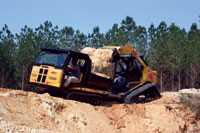
“The RTV1100’s cab is extremely quiet, with a noise level reading of 83 dbA at maximum speed — well within OSHA prolonged noise exposure limits,” explains Muramoto. “Most other UTVs with aftermarket cabs have trouble meeting these OSHA limits without extensive sound installation modifications.”
If you are more into the natural openness of a UTV, you’ll want to make sure that the roll cage meets the OSHA roll-over protection standard (ROPS). Adding a hard-top cover to your UTV, which can range between $50 and $1,000-plus, depending on the materials (plastic or steel), can also add protection. But it should be noted that most hard-tops do not meet the OSHA fall-object protection standard (FOPS).
“For extreme elements, conditions or jobsites that have a substantial risk of falling hazards, a cab can provide an additional level of protection,” says Carter. “E-Z-GO offers a soft-sided enclosure that offers protection from the elements, while maintaining easy entry and exit from the vehicle. However, a cab cannot provide complete protection from every possible hazard. Common sense and safety precautions must always be exercised.”
While you’re sitting comfortably in your UTV, you can take comfort in the additional options such as a heater, fan, cup holders, full front windshield, half front windshield and power outlets for charging electronics.
As soon as your walkie-talkie interrupts your optional add-on daydreams, you realize you are needed a mile down site. You quickly jump into your new mini chore truck and speed into the distance. Where ever there’s a crew member in need or a job to be done, your construction site-prepared UTV will get you there on time.
Jason Morgan is associate editor of Compact Equipment, based in Peninsula, Ohio.

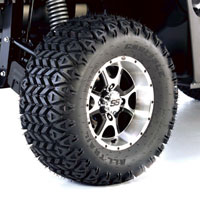 While the majority of manufacturers agree that the off-road tires that come standard on a UTV are perfect for a multitude of operations, they still aren’t recommended for prolonged hard-surface operation. On a jobsite — concrete and asphalt can’t be avoided. For those sites that are a virtual asphalt or concrete jungle, ITP’s tire/wheel kit provides improved performance on hard surfaces, without sacrificing off-road performance. The kit has also proven to be highly capable on hard-packed to intermediate off-road trail conditions.
While the majority of manufacturers agree that the off-road tires that come standard on a UTV are perfect for a multitude of operations, they still aren’t recommended for prolonged hard-surface operation. On a jobsite — concrete and asphalt can’t be avoided. For those sites that are a virtual asphalt or concrete jungle, ITP’s tire/wheel kit provides improved performance on hard surfaces, without sacrificing off-road performance. The kit has also proven to be highly capable on hard-packed to intermediate off-road trail conditions.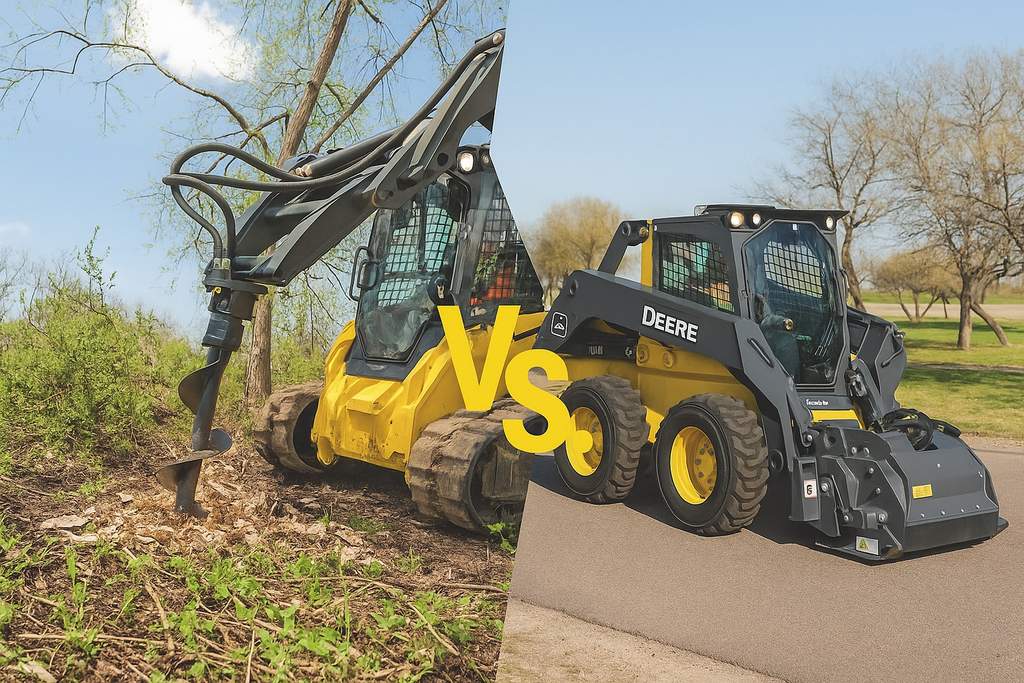
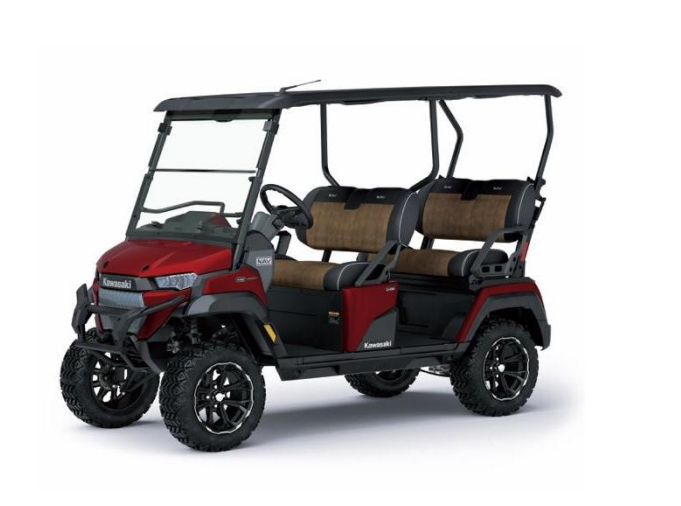

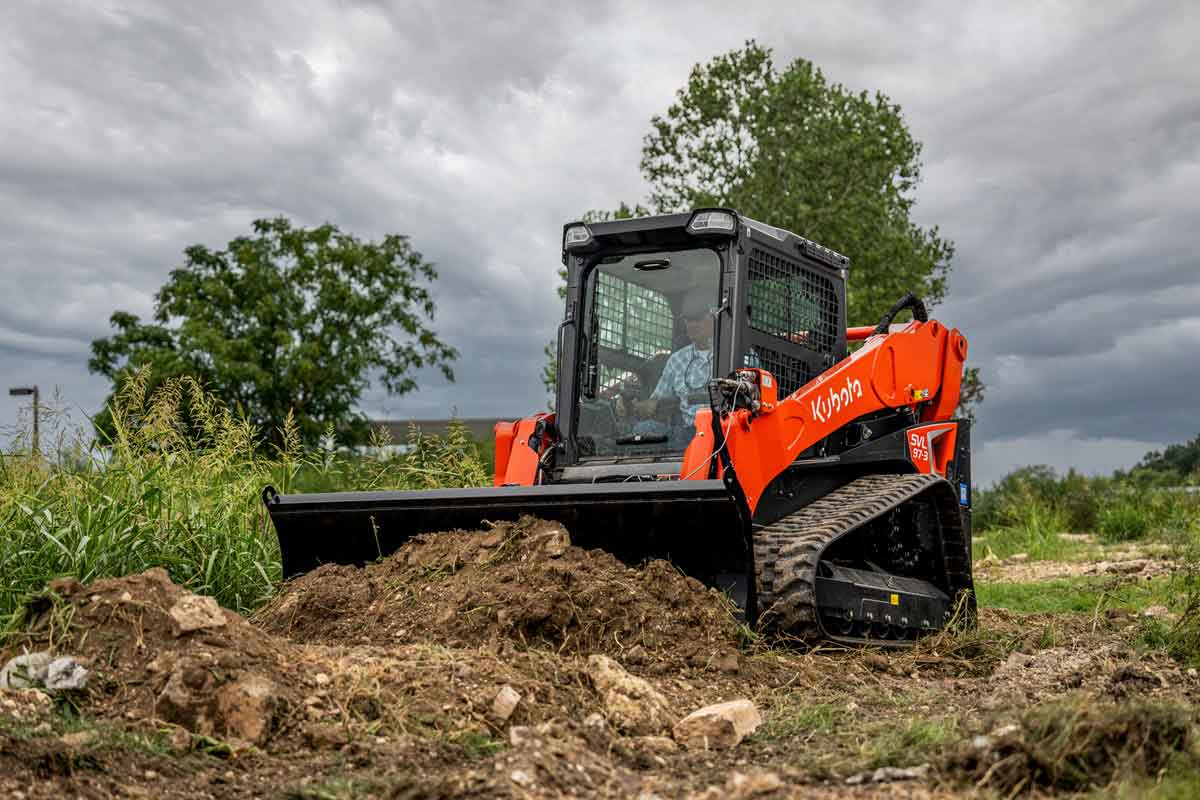
Comments are closed here.